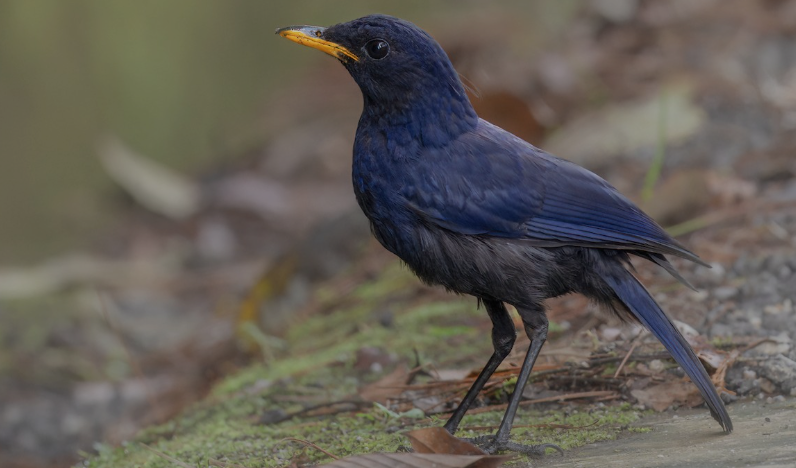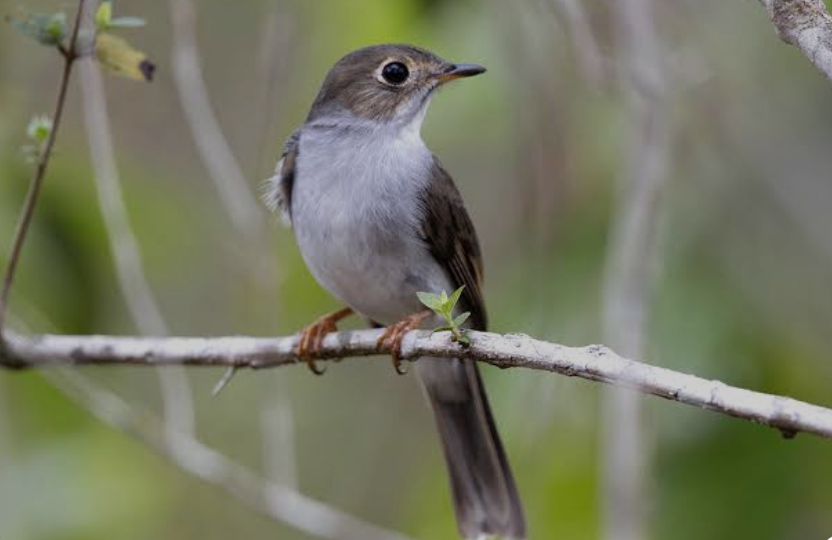
Birds that whistle are among the most common in the natural world. Their while often stand out because of the clarity and purity of the notes, resembling human whistling. These sounds are not only pleasant to hear but also serve as communication of either marking territory to attracting mates.
The ability to whistle is tied closely to anatomy. Birds produce sounds through a specialized organ called the syrinx, located at the base of the trachea. In species that whistle, the syrinx allows for fine control of airflow and vibration, creating pure, flute-like tones that remain clear even in noisy environments such as forests or grasslands.
In some species, males whistle complex songs during breeding season to advertise their fitness to potential mates. Others use repeated whistles as a way to defend territories, warning rivals of their presence. These calls act as both a show of strength and a practical tool for survival.
For migratory species, whistles can serve as a navigational tool or a method of maintaining contact within flocks. Clear, sharp notes cut through the wind and background noise, allowing individuals to stay connected while in flight. This is especially important during long journeys, where cohesion can mean the difference between survival and failure.

Birds That Whistle
Northern Cardinal
The northern cardinal is famous for its loud, clear whistles that often sound like “cheer-cheer” or “birdie-birdie.” Males use their whistling calls to defend territory and attract mates, and their songs are among the most recognizable in backyards across North America.
Black-Capped Chickadee
Though known for their “chick-a-dee” call, these small birds also produce a distinct whistled “fee-bee” song, especially during the breeding season. The clear whistle helps males establish territory and communicate with potential mates.
Eastern Meadowlark
Eastern meadowlarks are grassland birds with rich, flute-like whistles that carry across open fields. Their songs are not only melodious but also serve as a strong territorial marker to ward off rivals.
White-Throated Sparrow
This sparrow is easily recognized by its sweet, whistled “Old Sam Peabody” song. The notes are pure and clear, making it a favorite among bird enthusiasts who enjoy identifying species by sound.
Baltimore Oriole
Baltimore orioles sing with whistled notes that sound both bright and flute-like. These songs are used in communication between mates and to defend territories during breeding season.
Blackbird (Common Blackbird in Europe)
The male blackbird delivers a series of rich, melodic whistles, often sung from a high perch at dawn and dusk. Their songs are complex and can vary greatly from one individual to another.
Song Sparrow
True to its name, the song sparrow has a beautiful, varied repertoire that often includes whistled notes mixed with trills. Each individual bird may have its own unique version of the song.
Tufted Titmouse
The tufted titmouse produces a clear, whistled “peter-peter-peter” call. This repeating whistle is commonly heard in woodlands and suburban areas, making the bird easy to identify by ear.
Western Meadowlark
Closely related to the eastern species, western meadowlarks are known for their rich, flute-like whistles that echo beautifully across prairies and grasslands. Their songs are more musical and complex than those of their eastern relatives.
European Starling
These adaptable birds are skilled mimics and often produce whistles that resemble other birds, car alarms, or even human-made sounds. Their whistling calls are versatile and vary greatly between individuals.
American Robin
The American robin greets the morning with a series of melodious whistles that often sound like “cheerily, cheer up.” These dawn songs signal territory ownership and the arrival of spring.
Golden-Crowned Sparrow
This bird is well known on the west coast for its haunting three-note whistled song, often described as sounding mournful. It’s one of the easiest ways to recognize the species during migration and breeding.
Black-Whiskered Vireo
The black-whiskered vireo produces persistent whistling notes, often repeated endlessly throughout the day. Their whistled song is simple but distinct, making them easy to identify by ear in wooded habitats.
Bohemian Waxwing
These birds give off high-pitched, whistling trills that are especially noticeable in winter flocks. Their calls help maintain contact among group members while feeding on berries.
Killdeer
Although often recognized by their sharp “kill-dee” call, killdeer also produce a series of short, high-pitched whistles. These sounds are especially used during flight and when defending their nests.
Northern Mockingbird
Famous for imitating the songs of other birds, northern mockingbirds frequently include clear whistles in their repertoires. Their songs can go on for hours, with repeated phrases that sound both musical and commanding.
Wood Thrush
The wood thrush is celebrated for its ethereal, flute-like whistles that echo through eastern forests. Its song blends clear, melodic notes with harmonic overtones, making it one of the most admired bird songs in North America.
Black-Crested Titmouse
Similar to its tufted cousin, this bird produces whistled “peter-peter” notes that are clear and repetitive. These whistles help with territory defense and communication during the breeding season.
Great Kiskadee
This bold tropical bird uses a variety of vocalizations, including loud, whistling calls that sound like its name, “kis-ka-dee.” Its whistles are distinctive and often heard across open habitats and towns.
Whistling Kite
True to its name, this raptor produces high-pitched whistling calls, often while soaring. Its voice carries over long distances and serves as both a contact call and a territorial signal.
Black-Headed Grosbeak
The male’s song is a rich series of whistled notes, often compared to a “robin with jazz improvisation.” Its whistle-filled melodies are bright, complex, and frequently delivered during the breeding season.
Gray Catbird
Although best known for its cat-like mew, the gray catbird also produces a wide range of whistles woven into its mimicking songs. These whistles add variety and complexity to its vocal displays.
Olive-Sided Flycatcher
This bird sings a distinctive whistled “quick-three-beers” song, which stands out in the quiet of coniferous forests. The clear notes are easy to recognize, even from a great distance.
Western Tanager
Western tanagers have a series of short, whistled phrases in their songs that resemble a robin’s but are more hoarse. These whistles are used mainly by males to establish breeding territories.
Black-Naped Oriole
This striking yellow-and-black bird produces flute-like whistles that sound both sweet and mellow. Its calls are commonly heard in wooded areas and parks, where its songs travel long distances.
Crested Lark
Crested larks are known for their melodious whistles delivered in flight or from perches. Their songs often include clear whistled notes, sometimes mixed with mimicked sounds of other species.
Collared Kingfisher
This coastal bird has a loud, clear whistling call that echoes across mangroves and shorelines. Its whistles serve as both territorial signals and communication with mates.
Pied Butcherbird
Famous in Australia, the pied butcherbird produces rich, musical whistles considered among the most beautiful bird songs. Their tunes are complex, with clear, flute-like notes that can vary by region.
White-Eyed Vireo
This small vireo delivers a song filled with sharp whistles and short phrases, often sounding like a series of quick, ringing calls. Its whistled notes are distinctive and easy to pick out in dense brush.
Japanese Bush Warbler
The Japanese bush warbler is celebrated in its native range for its melodious, whistling song. Its notes are flute-like and often associated with the arrival of spring.
Golden Oriole
This brightly colored bird produces mellow, fluting whistles that carry beautifully through woodlands. Its song is both simple and elegant, often compared to a clear musical pipe.
Eurasian Blackcap
The Eurasian blackcap has a varied, warbling song that includes sweet whistled notes. Males often sing from hidden perches, filling forests and gardens with their melodious voices.